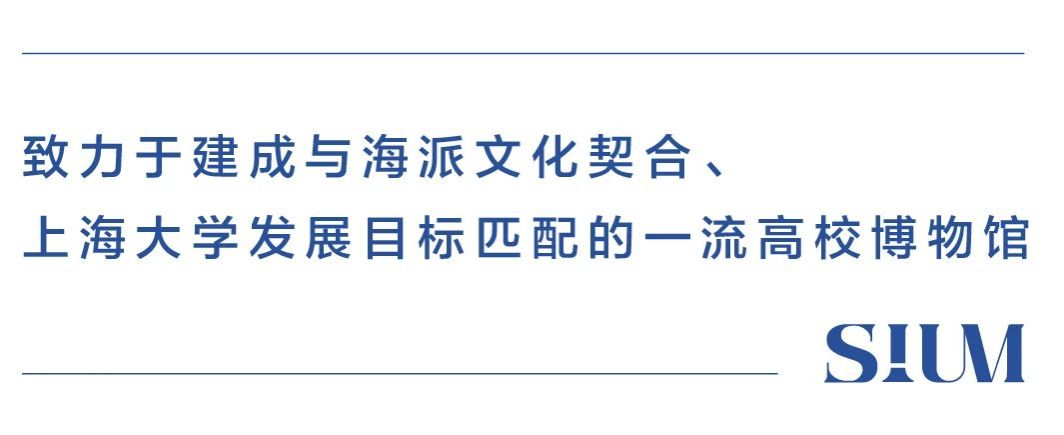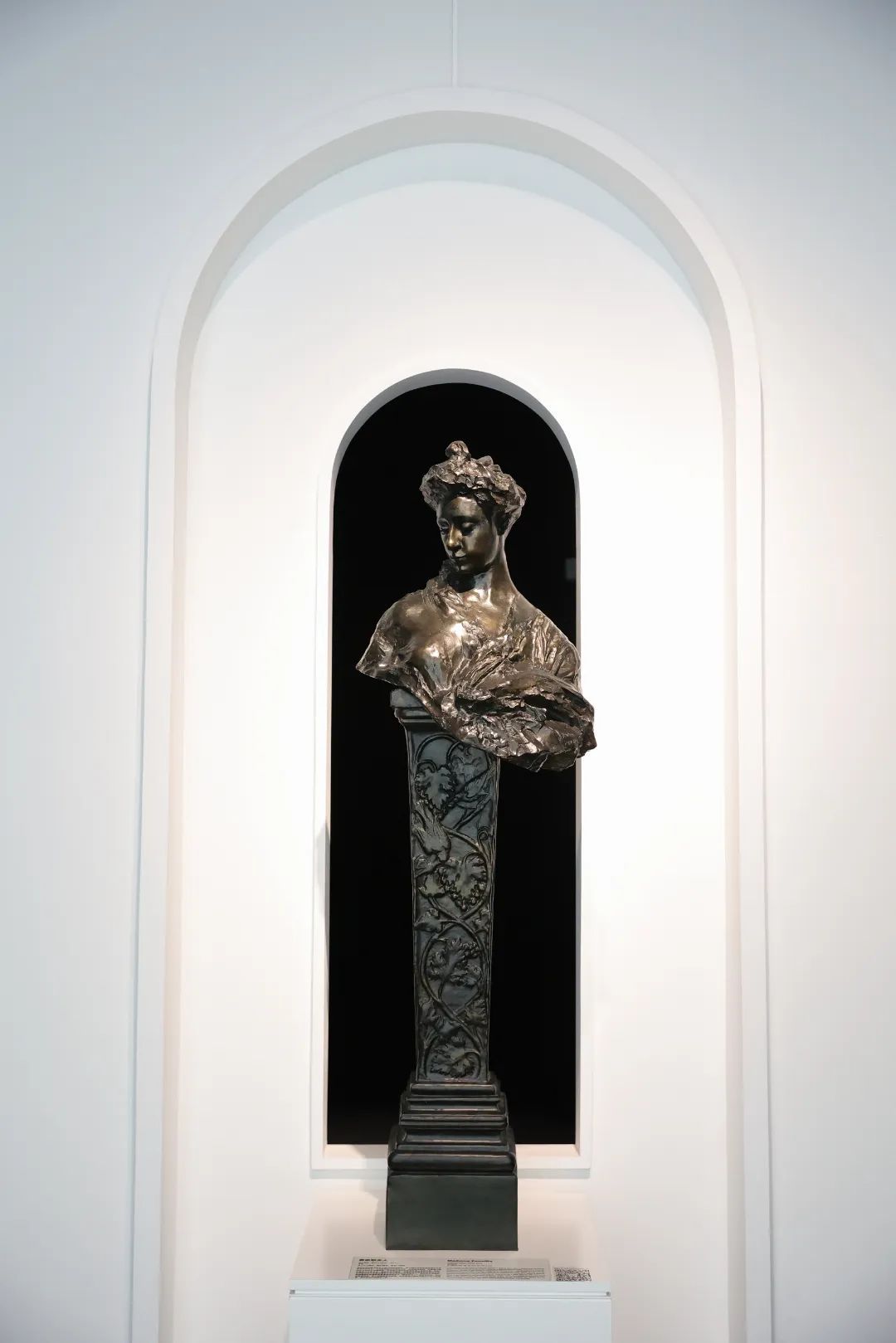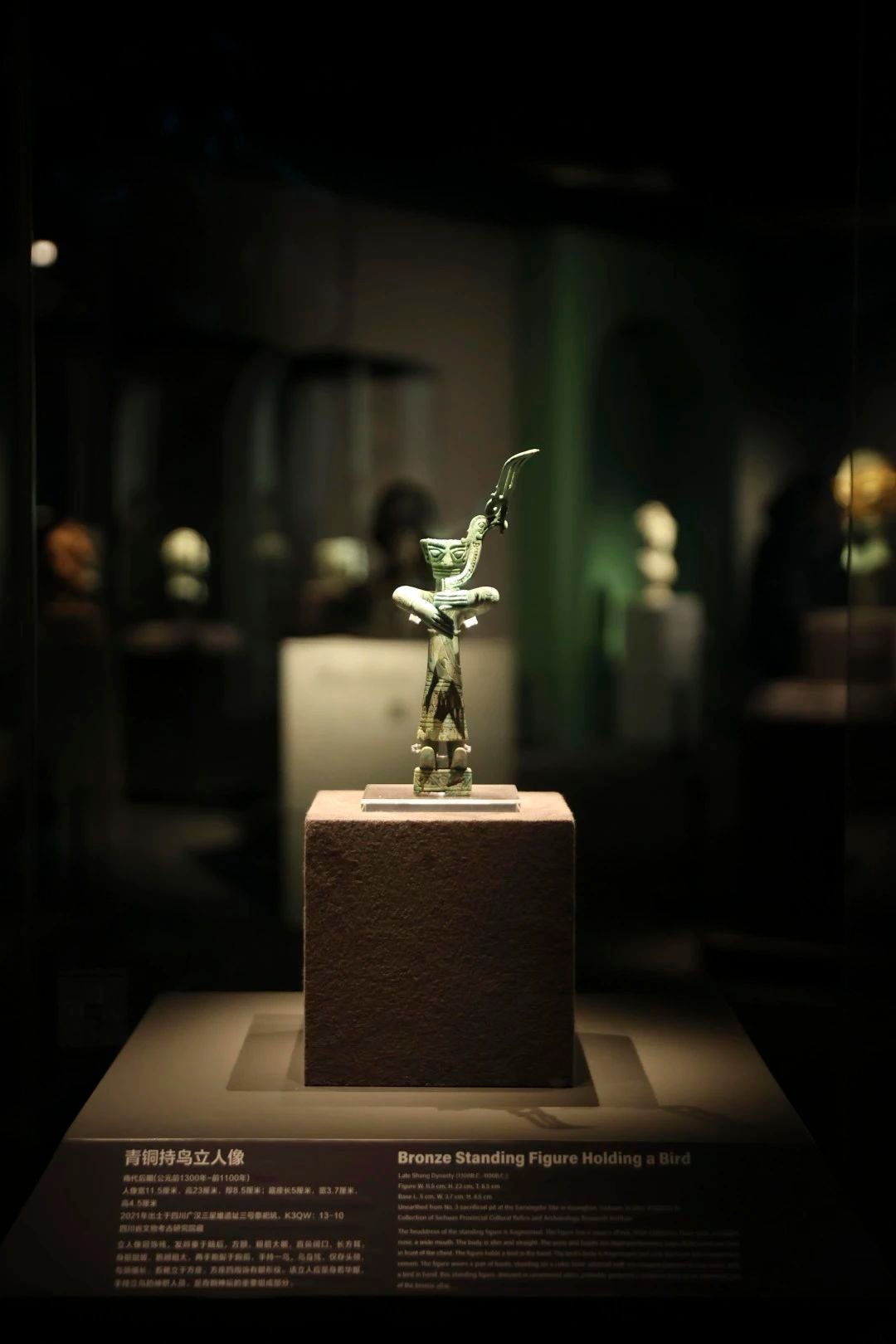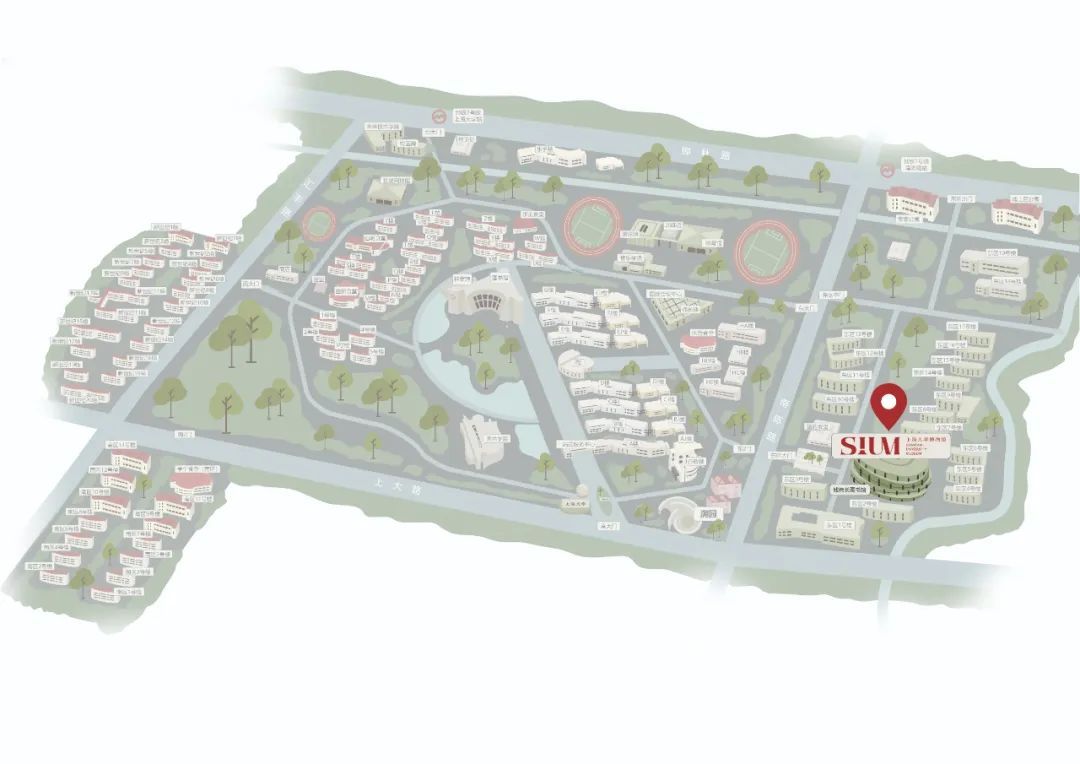
“沉睡三千年,一醒惊天下”的三星堆遗址,是中华文明璀璨星河中明亮而神奇的一颗。
罗丹是“现代雕塑之父”,他的作品中饱含对生命、自然的歌颂、热爱与忧思。
在上海大学博物馆举办的特展——“青铜之光:三星堆与罗丹的超时空对话”展出了许多三星堆、金沙遗址出土文物和罗丹及其同时代雕塑家的作品,让我们一起来详细了解展品背后的故事吧!
《费奈耶夫人》

· 奥古斯都·罗丹(1840—1917)
· 青铜
· 高162.5厘米,宽51厘米,深36.5厘米
· Auguste Rodin (1840-1917)
· Bronze
· H.162.5cm; W.51cm; Pr.36.5cm
费奈耶夫人是罗丹的赞助人之一费奈耶先生的妻子,她的丈夫莫里斯·费奈耶是个实业家,热爱收藏艺术品,是法兰西艺术学院会员,他对罗丹的作品情有独钟,在罗丹困难时期提供过诸多帮助,尤其是在罗丹的作品《巴尔扎克》引起轩然大波的时候。
罗丹为她做的胸像体现了罗丹在整合头像和底座方面的大胆尝试,而这也是他在阿尔玛展馆展览 的主要关注点。《费奈耶夫人》既是一件相当端庄的官方雕像,也是一件体现私下交情的小型雕像。这件作品的重点在于人物头部微微倾斜,罗丹通过这样的姿势赋予半身像更多的情感。此外,半身像周围还有些许衬托,比如这件披肩,它使得人物形态不拘泥于正襟危坐,而是通过宽松的披肩体现人物的性格。此外,半身像立于柱子上,形态仿古代廊柱,也使作品的展示空间更加丰富。罗丹尝试将半身像放置在不同高度的底座或圆柱上。通过这样的搭配,装饰有树叶和藤叶的底座彻底改变了“费奈耶夫人”的视觉效果,她的头略微抬起,身上的披肩随意搭着,这种视角让雕像与观众产生了距离感,就好像她无法接近一样。
罗丹为费奈耶夫人制作了不同材质及不同版本的胸像和头像,如石膏版本、大理石版本。在不同的版本中,费奈耶夫人的姿势都很相似,微微地侧着头,双眼微闭,十分优雅。罗丹赠予费奈耶先生几个胸像版本,其他版本现藏于奥赛博物馆及罗丹博物馆。
Madame Fenaille was the wife of Maurice Fenaille, one of Rodin’s major patrons. Mr. Fenaille was an industrialist, an avid art collector and a member of Académie des Beaux-Arts. He took a special interest in Rodin’s works and always gave timely assistance when the sculptor had tough times, particularly when the sculpture Monument to Balzac caused great controversy. The bust created by Rodin for Madame Fenaille reflects his bold experimentation in integrating the sculpture with the pedestal, which was also the primary focus of his exhibition at the Alma Pavilion. Madame Fenaille is not only a dignified official statue but also a small craft sculpture that represents the personal relationship between Rodin and the Fenaille’s. In this sculpture, the head of Madame Fenaille is slightly tilted. This is Rodin’s way of adding more emotional touches to the work. In addition, a shawl is draped loosely around the shoulder of Madame Fenaille in the sculpture, suggesting that she is in a relaxed posture and has an unconstrained personality. The bust stands on an ancient-style pillar, which greatly extends the exhibition space for the work. Rodin placed the sculpture on pedestals or pillars at different heights to find the best match. Eventually, he decided to use a pillar adorned with leaves and vines as the pedestal of the sculpture Madame Fenaille, which successfully changed the visual effect of the whole work. With a shawl loosely draped on her shoulder, she slightly tilts her head and looks down from a high pillar, looking unapproachable and alienated.
Rodin sculpted multiple versions of busts and heads of Madame Fenaille with different materials, such as plaster and marble. In these works, her postures are quite similar, with her head always slightly turned to the side and her eyes half-closed, exuding an air of elegance. Except for several busts of Madame Fenaille that were given away by Rodin to Mr. Fenaille, others are now housed in the Musée d’Orsay and Rodin Museum.
青铜持鸟立人像

· 商代后期(公元前1300年—前1100年)
· 人像:宽11.5厘米,高23厘米,厚8.5厘米
· 底座:长5厘米,宽3.7厘米,高4.5厘米
· 2021年出土于四川广汉三星堆遗址三号祭祀坑,K3QW:13-10
· 四川省文物考古研究院藏
· Late Shang Dynasty (1300B.C.-1100B.C.)
· Figure W. 11.5cm; H. 23cm; T. 8.5cm
· Base L. 5cm; W. 3.7cm; H. 4.5cm
· Unearthed from No. 3 sacrificial pit at the Sanxingdui Site in Guanghan, Sichuan, in 2021,K3QW:13-10
· Collection of Sichuan Provincial Cultural Relics and Archaeology Research Institute
立人像冠饰残,发辫垂于脑后,方颐,粗眉大眼,直鼻阔口,长方耳,耳垂有一穿孔,后留发辫。立人身着多层华丽繁复衣饰,着靴立于方座,方座四周有眼形纹饰。身躯细长挺拔,右肩套有麻绳状铜丝,胳膊与手粗大夸张,两手抱握于胸前,左手在上,小指翘起,右手在下。手持一鸟,鸟身残,仅存头颈,鸟颈细长,饰有连珠纹,鸟头高度在立人头以上,钩喙上有夔龙形额饰,尾尖向前弯曲。该立人应是身着华服,手持鸟的神职人员,是青铜神坛的重要组成部分。鸟不但具有神性和灵性,也是自然生命周而复始的象征,在三星堆图腾崇拜文化中有着重要意义。该器物的出土也为探索青铜大立人手持何物提供了另一种可能。
The headdress of the standing figure is fragmented. The figure has a square cheek, thick eyebrows, large eyes, a straight nose, a wide mouth, elongated ears with piercing on an earlobe, and braided hair hanging behind the head. The figure is clad in multiple layers of elaborate clothing and wears a pair of boots, standing on a cubic base adorned with eye-shaped patterns on four sides. The body is slim and straight, with a bronze wire that looks like a hemp rope secured on the right shoulder. The arms and hands are disproportionately large. Both hands are held in front of the chest, with the left hand above the right one and the left little finger cocked. The figure holds a bird in the hand. The bird’s body is fragmented and only the head and neck remain. The slender neck of the bird is decorated with Lianzhu Wen(连珠纹, a pattern that comprises a series of circular or spherical objects connected to each other) and the bird’s head is higher than the head of the figure. The hooked beak of the bird is decorated with Kui(夔)-dragon pattern, whose tail curves forward.
With a bird in hand, this standing figure, dressed in ceremonial attire, probably performs a religious duty, as an important part of the bronze altar. Birds not only denote divinity and spirituality but also symbolize the cycle of nature and life, playing a significant role in the totem worship of the Sanxingdui civilization.
展览时间:
2023年12月13日至2024年2月1日
展览地点:
上海大学博物馆一层临展厅
(上海市宝山区南陈路333号)
开放时间:
周一至周日8:30-16:30(16:00停止入馆)
校内师生凭本人一卡通入馆,无需预约。
校外观众采取网上预约方式入馆,扫描下方二维码或关注“上海大学博物馆”微信公众号,点击“个人预约”。

/地址/
上海大学博物馆
(南陈路333号)


